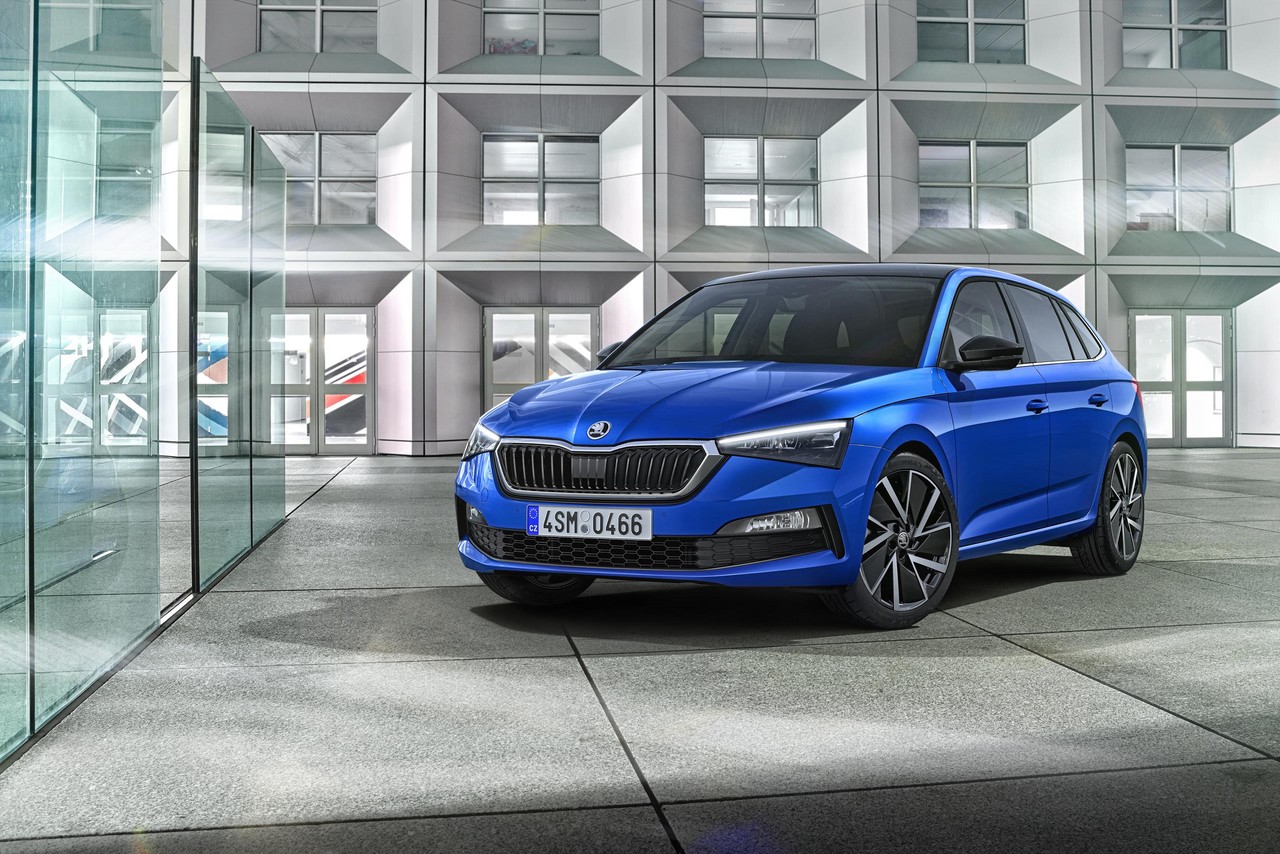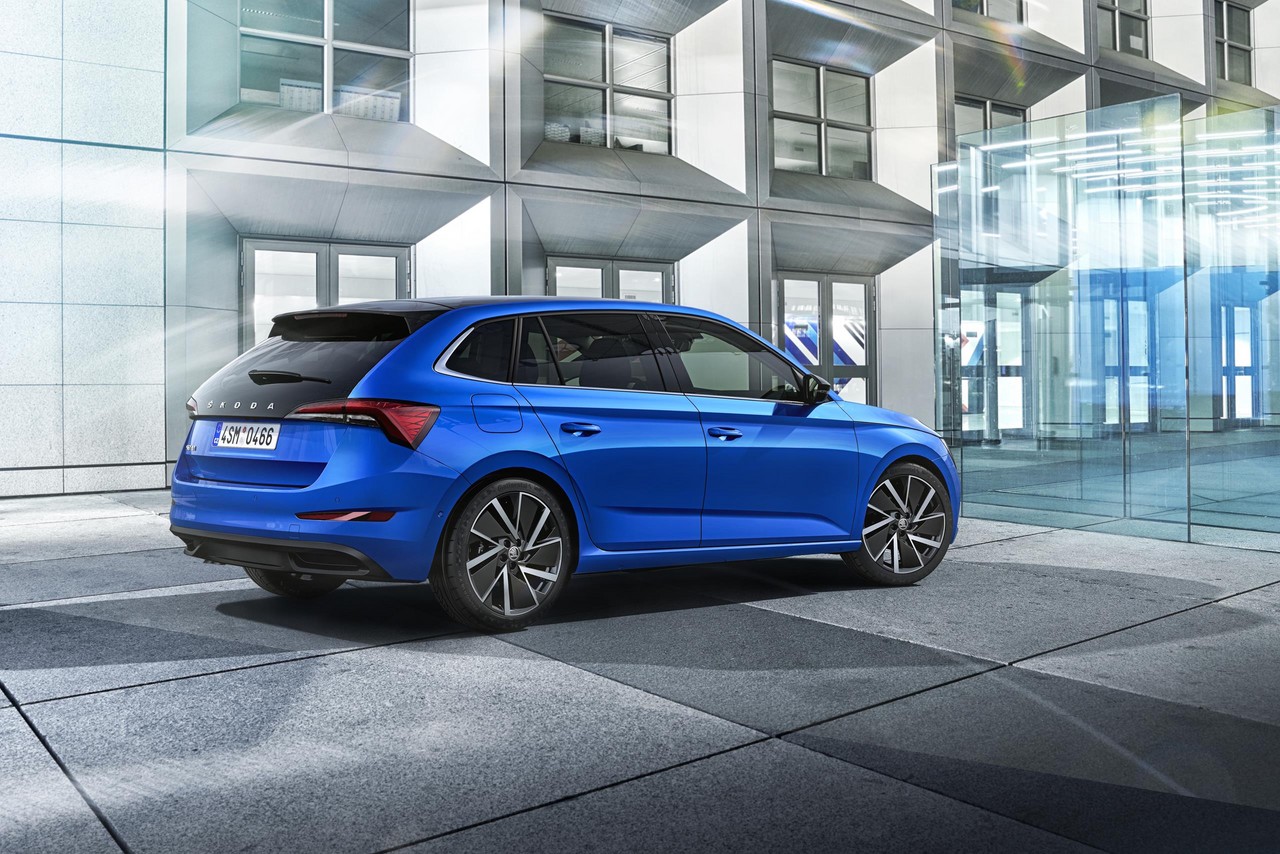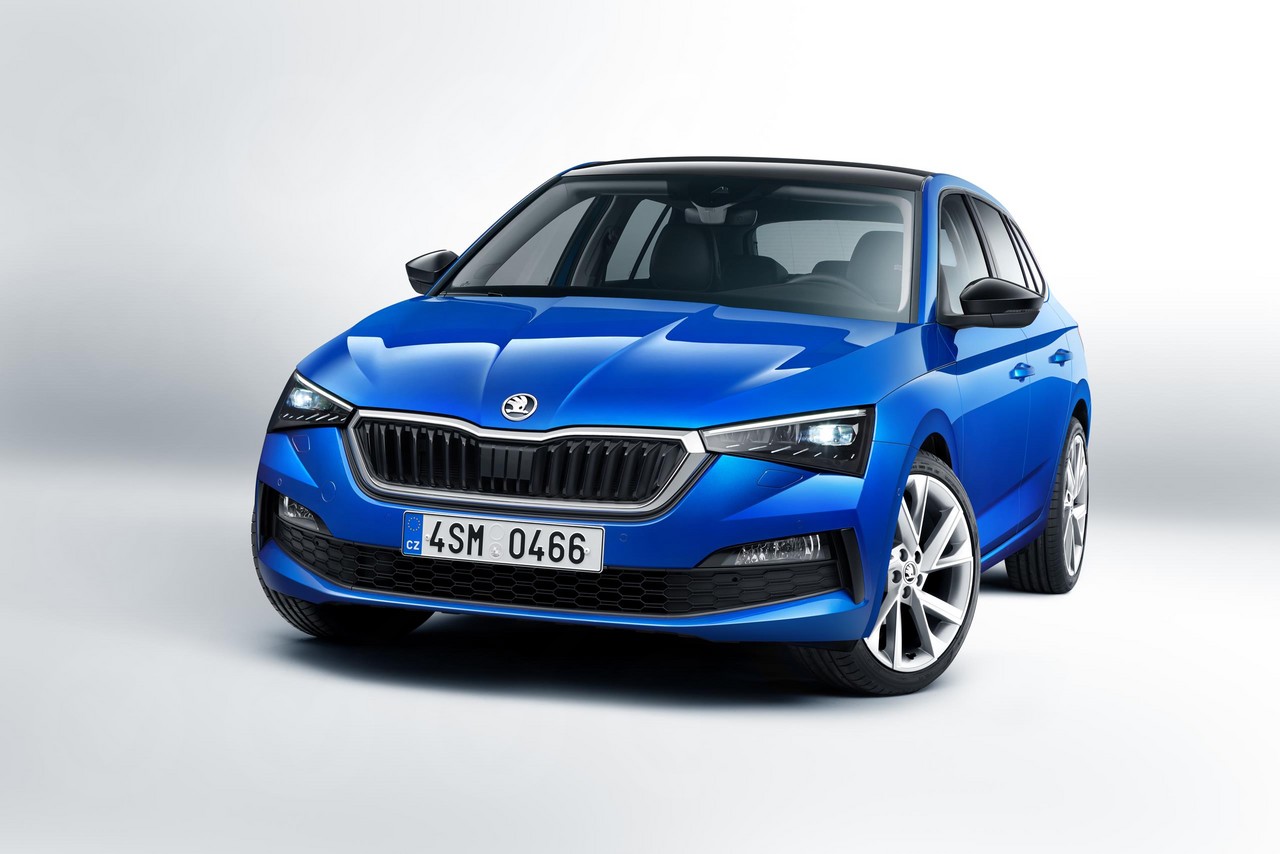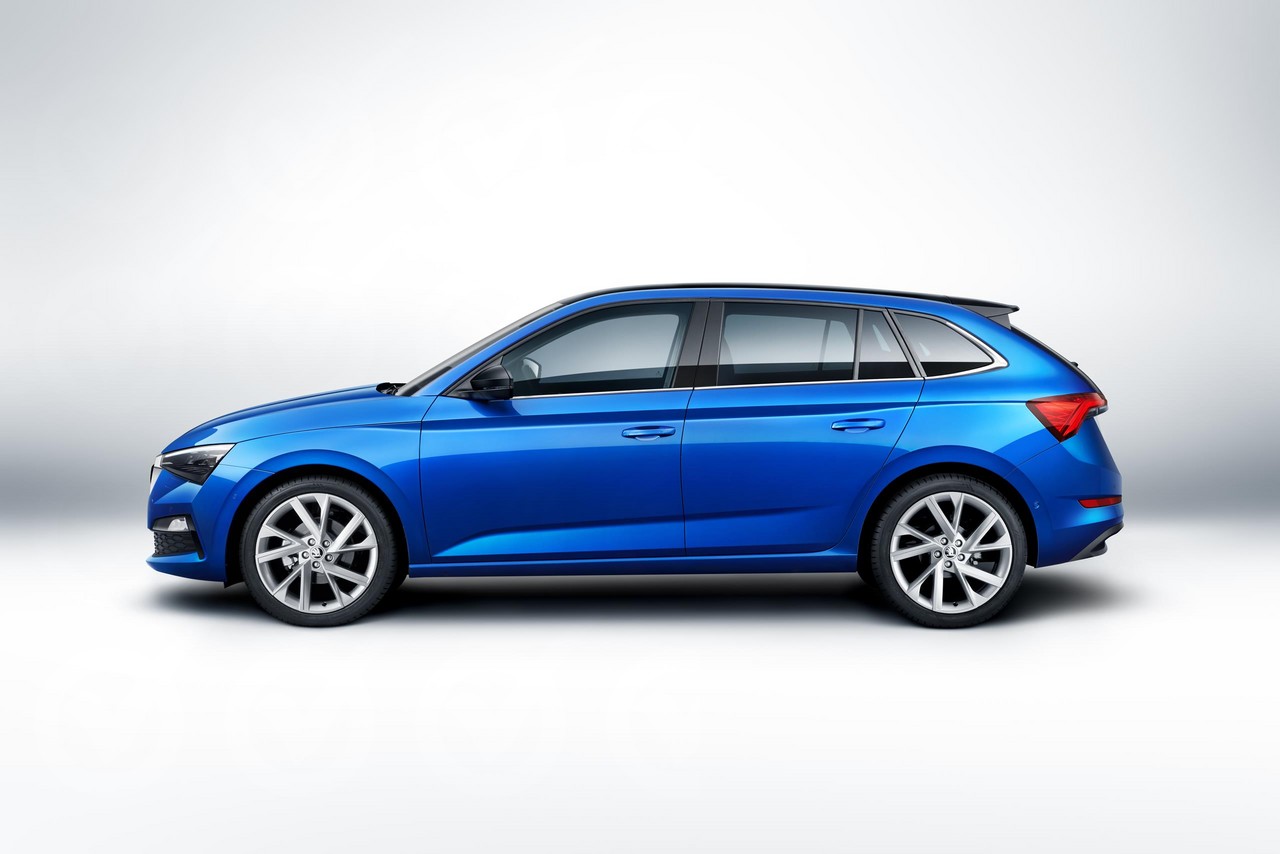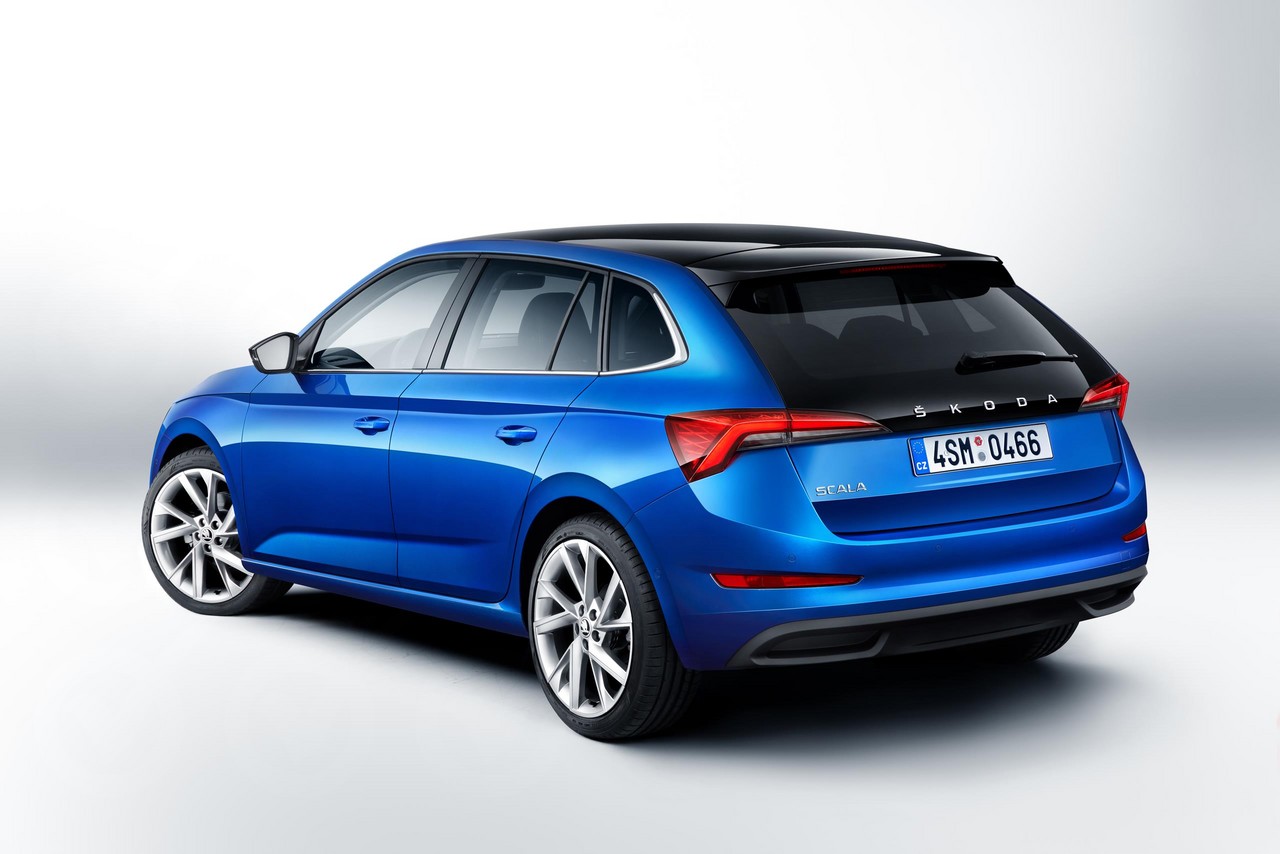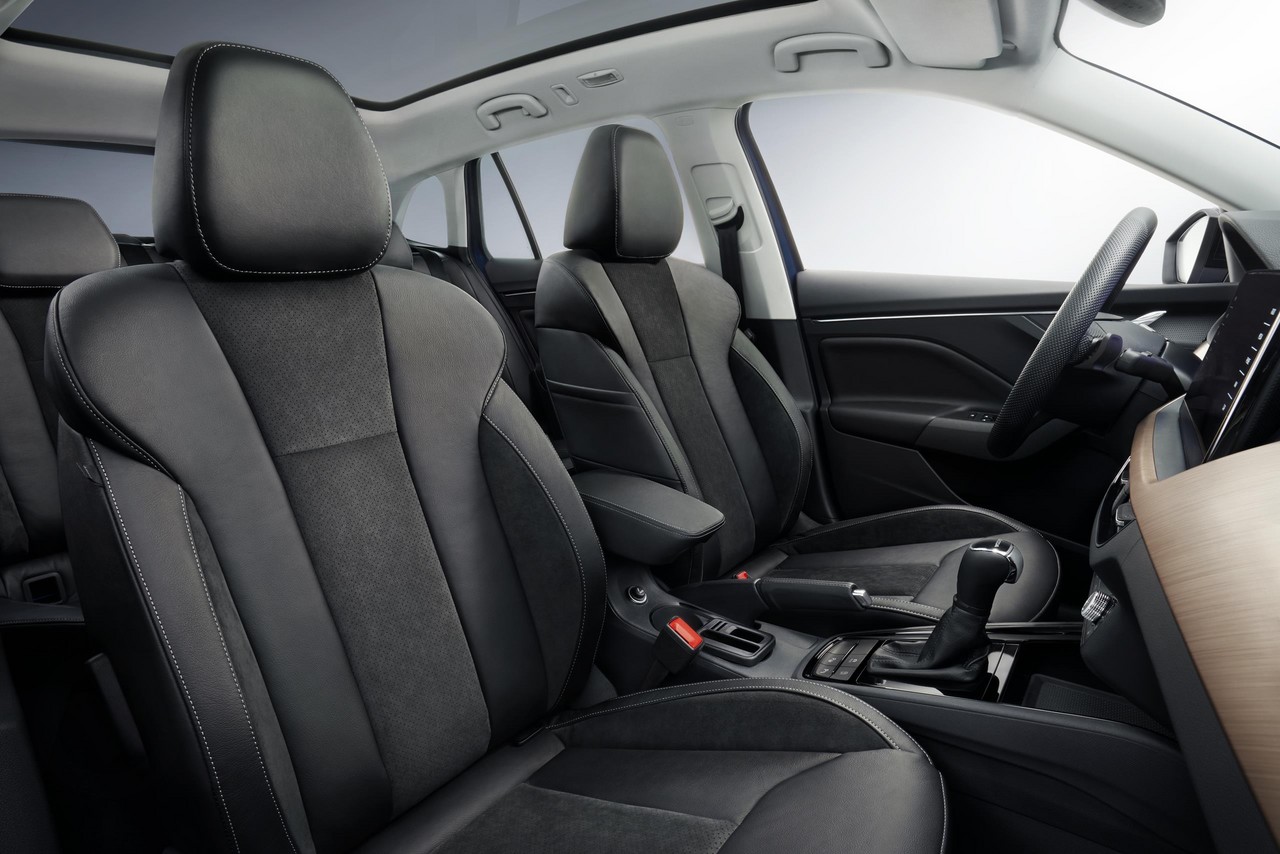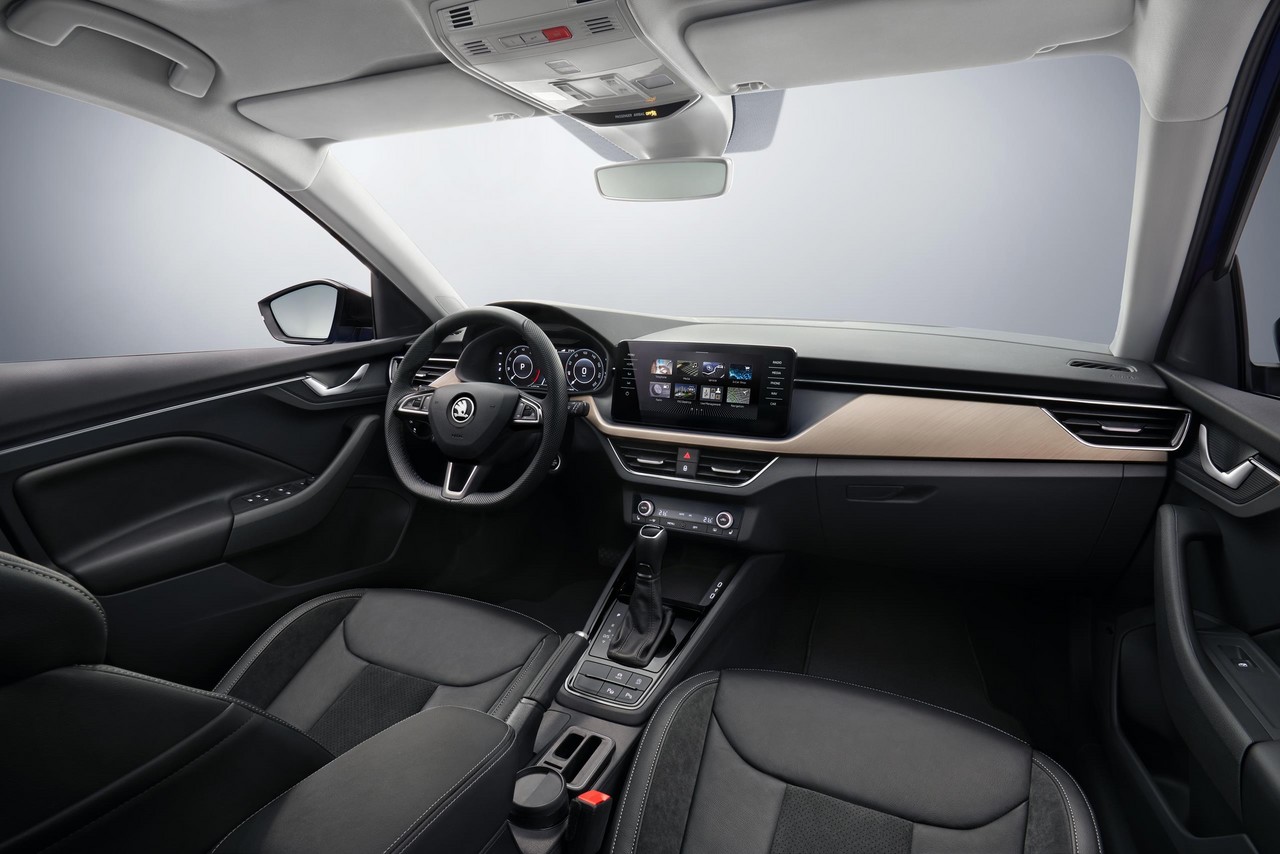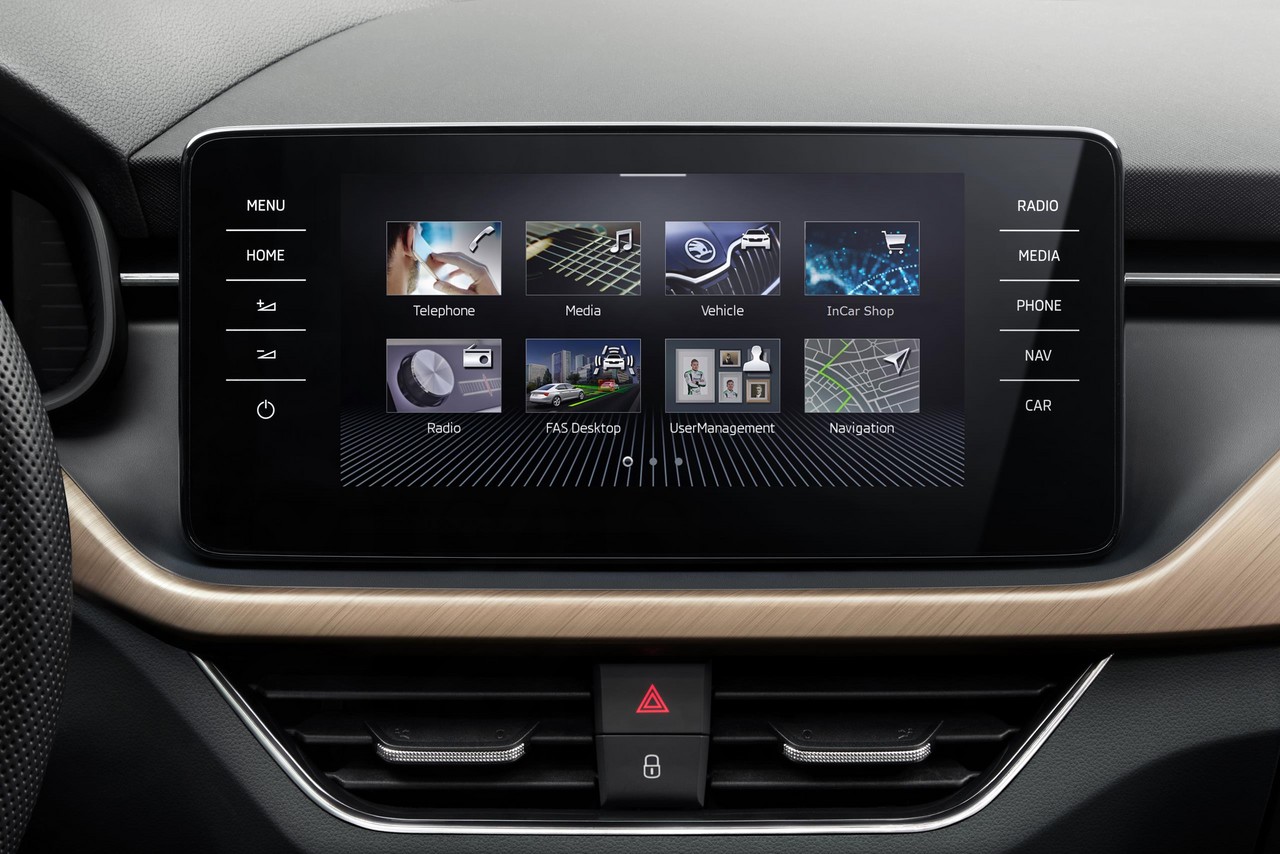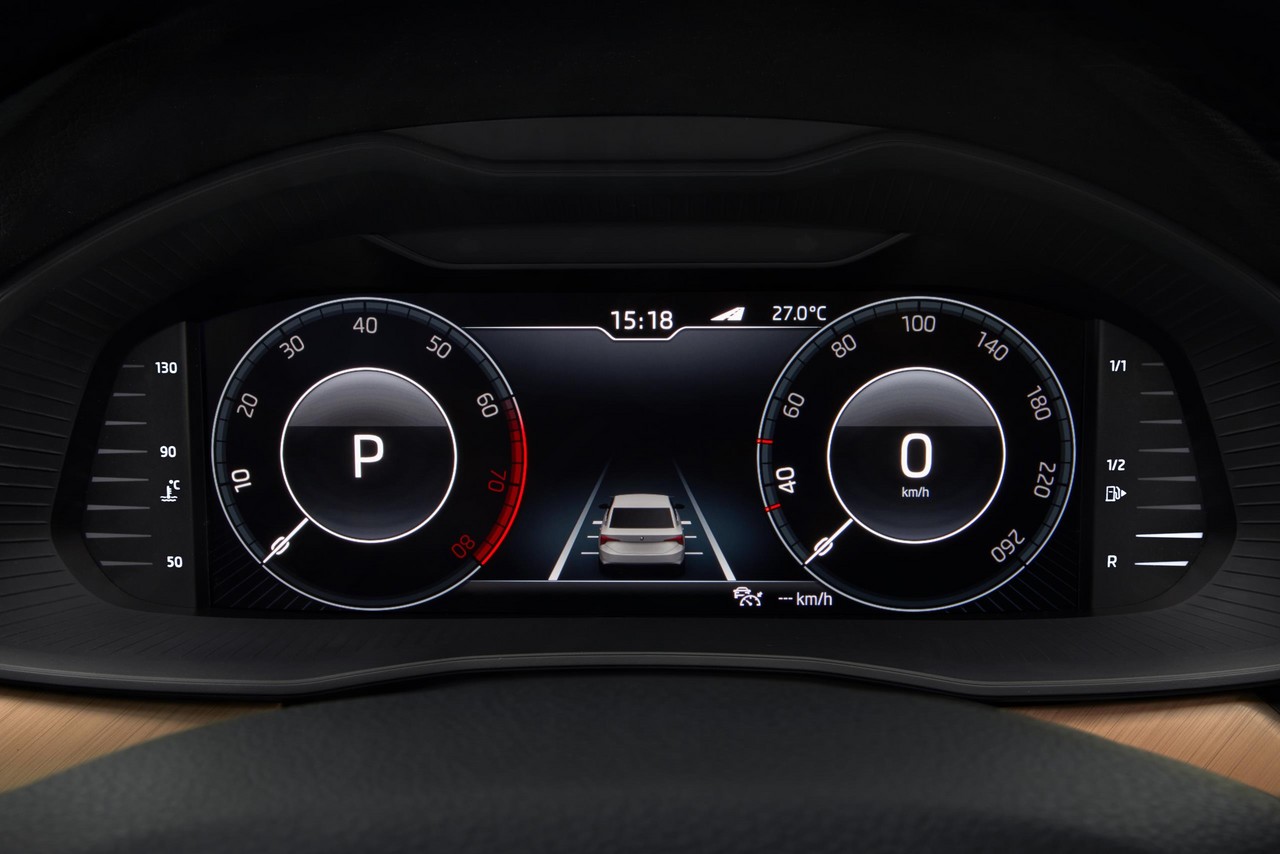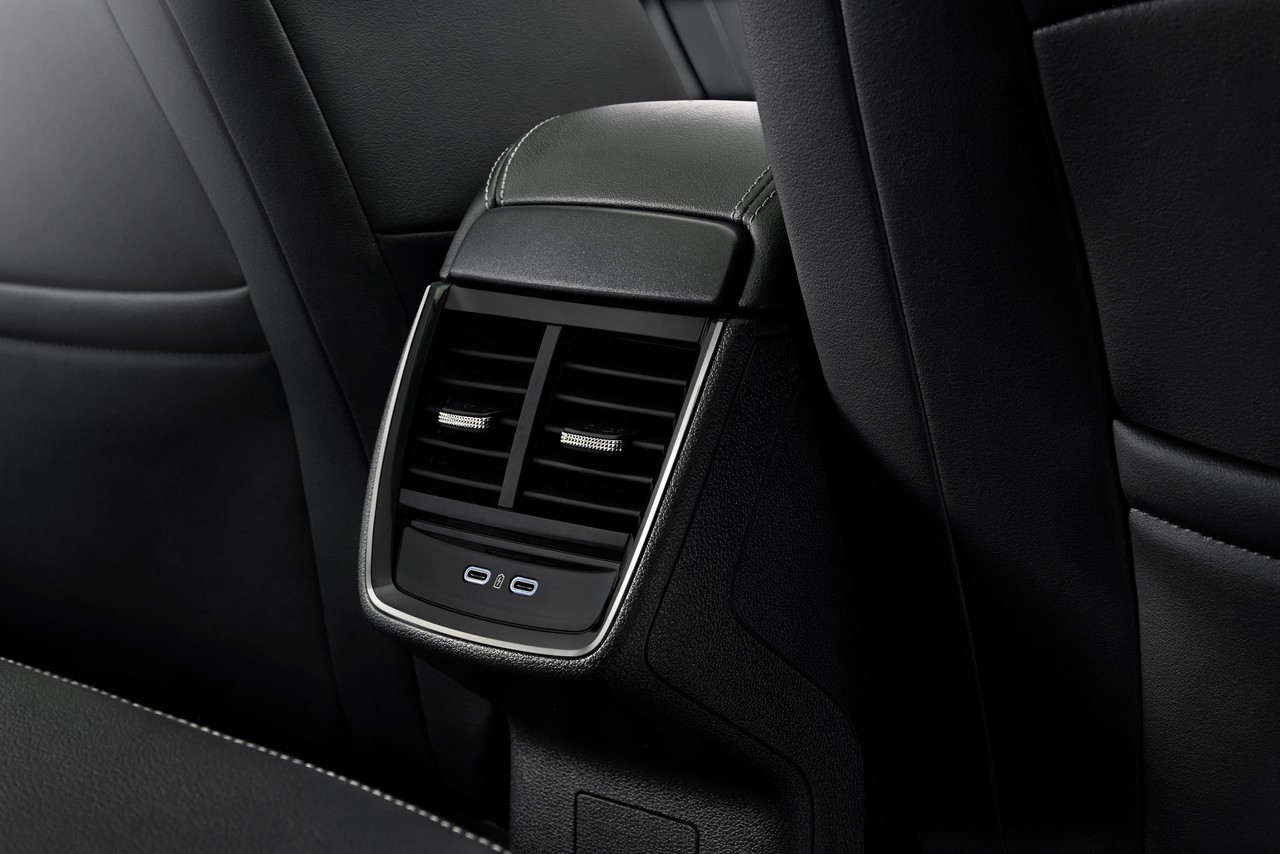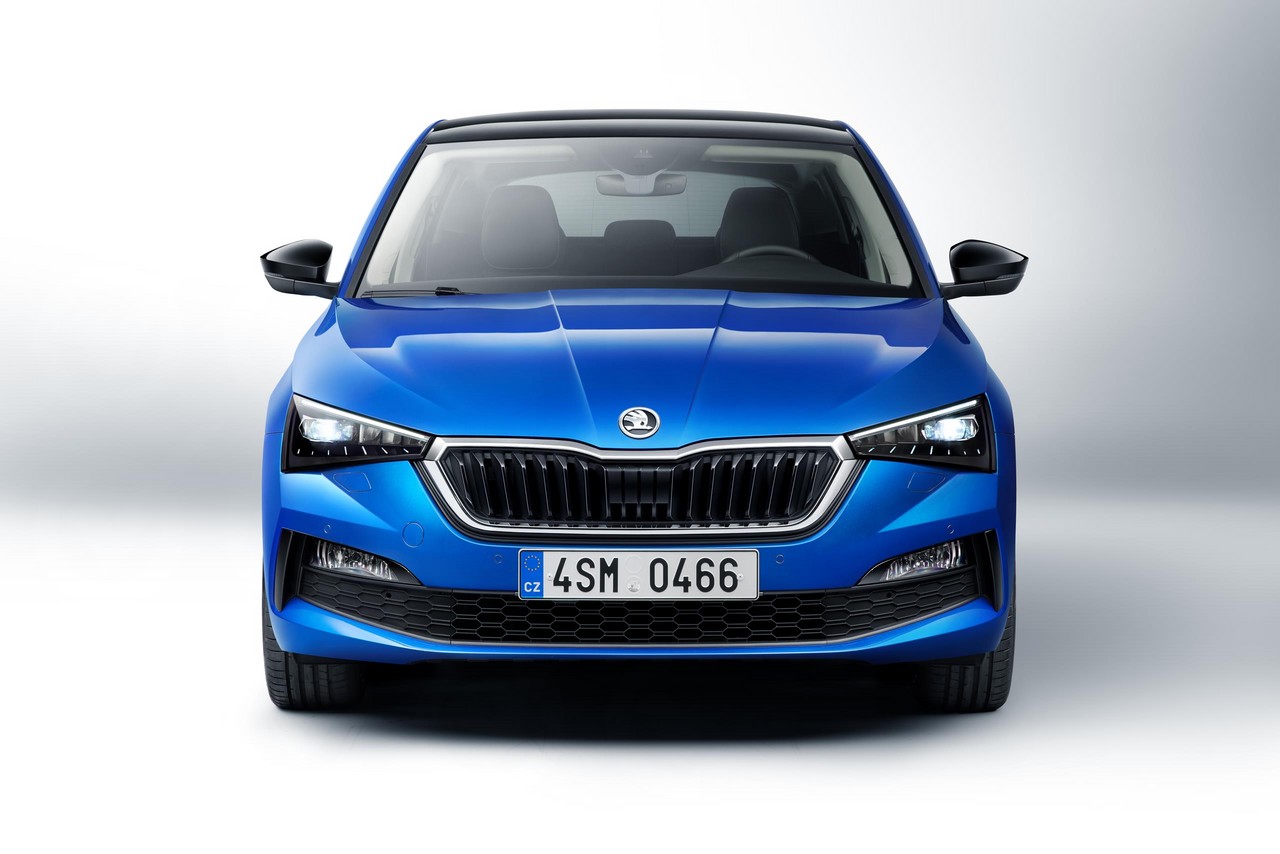
- Class-leading interior space and luggage capacity
- Active safety technologies expected to be fitted as standard
- 1.0 TSI turbo petrol engine is economical…
- … but noisy under load
- Engines require premium unleaded petrol
- Steering feedback?
- Pricing?
Overview
To be released in Australia in late 2019, the Skoda Scala is a compact five-door hatchback. Manufactured in Mlada Boleslav, Czech Republic, the front-wheel drive Skoda Scala will be available with 1.0 TSI, 1.5 TSI and 1.6 TDI engines (see table below), though the range for Australia is yet to be confirmed.
All engines for the Skoda Scala have Stop/Start technology which enables them to shut down when the Scala is stationary in traffic. Furthermore, the 1.5 TSI engine has Active Cylinder Technology (ACT) which can shut down cylinders #2 and #3 at engine speeds from 1400-4000 rpm and at speeds up to 130 km/h. To reduce emissions, all petrol engines are fitted with a particulate filter, while the 1.6 TDI engine has an SCR catalytic converter with AdBlue injection and a diesel particulate filter.
Within the Skoda range, the Scala effectively replaces the Skoda NH Rapid Spaceback .
| Variant | Engine | Trans. | Peak power | Peak torque |
|---|---|---|---|---|
| 1.0 TSI | 999 cc EA211 turbo petrol I3 | 5sp man. | 70 kW at 5000-5500 rpm | 175 Nm at 1500-3500 rpm |
| 6sp man., 7sp DCT |
85 kW at 5000-5500 rpm | 200 Nm at 2000-3500 rpm | ||
| 1.5 TSI | 1498 cc EA211 turbo petrol I4 | 6sp man., 7sp DCT |
110 kW at 5000-6000 rpm | 250 Nm at 1500-3500 rpm |
| 1.6 TDI | 1598 cc EA288 turbo diesel I4 | 6sp man., 7sp DCT |
85 kW at 3250-4000 rpm | 250 Nm at 1500-3200 rpm |
Body and dimensions
The Skoda Scala is underpinned by Volkswagen AG’s Modular Transverse Matrix (MQB A0) which is shared with the Volkswagen Mk.6 Polo and Audi GB A1 . Compared to the Skoda NH Rapid Spaceback which it replaces, the Skoda Scala is 58 mm longer (at 4362 mm), 87 mm wider (1793 mm), 12 mm taller (1471 mm) and has a 47 mm longer wheelbase. The Skoda Scala has a luggage capacity of 467 litres, though this increases to 1410 litres when the rear seats are folded down and luggage is filled to the roofline.
The Skoda Scala has a drag co-efficient of 0.29 Cd and aerodynamic measures include:
- Underbody panels;
- ‘Air Curtains’ which guide air around the sides of the front bumper ‘in a controlled manner’;
- Air-guiding parts for engine cooling;
- Air-directing vanes on the alloy wheels;
- Integrated ‘finlets’ on the roof spoiler.
Suspension
The front suspension for the Skoda Scala has consists of MacPherson struts and triangular wishbones, with a torsion beam axle at the rear. When specified with the optional Sport Chassis Control, the Skoda Scala has 15 mm lower suspension and the driver can select from ‘Normal’ and ‘Sport’ modes; the latter provides firmer characteristics for the valve-reversible shock absorbers.
Steering
The Skoda Scala has rack-and-pinion steering with electric power assistance.
Safety equipment
Standard safety equipment for the Skoda Scala consists of dual front airbags, a driver’s knee airbag, front seat-mounted side airbags, full-length curtain airbags, ABS, electronic brake force distribution, brake assist, electronic stability control, traction control and front seatbelts with pre-tensioners and load limiters. As an extra-cost option, the Scala can be specified with rear side airbags.
The Skoda Scala will be available with the following active safety technologies –
- Front Assist: operating at speeds above 30 km/h, Front Assist uses a radar sensor to detect if the Skoda Scala is closing too fast on the vehicle ahead. If this occurs, Front Assist 1) provides audible and visual warnings to the driver; 2) brings the brake pads into contact with the brake discs in preparation for an emergency stop; and, 3) provides a jolting brake application to alert the driver. If the driver fails to respond, Front Assist applies the brakes autonomously to avoid or reduce the severity a collision;
- City Emergency Brake: operating at speeds below 30 km/h, City Emergency Brake uses a radar sensor and front camera to monitor the area ahead for vehicles and pedestrians. If a collision is anticipated, the driver is alerted via visual and audible warnings, followed by jolting brake application. If the driver fails to respond, the system initiates emergency braking;
- Adaptive Cruise Control (ACC): operating at speeds up to 210 km/h, ACC uses a radar sensor to maintain a safe distance from the vehicle ahead, controlling engine speed and applying the brakes as necessary. For models with the DCT, ACC can bring the vehicle to rest and, within three seconds of being stationary, automatically accelerate up to its cruising speed provided the road ahead is clear;
- Crew Protect Assist: operating at speeds above 30 km/h, Crew Protect Assist can detect when an emergency manoeuvre is being performed and uses the electric front seatbelt pre-tensioners to remove slack from the seatbelts. In cases where high lateral accelerations are detected, Passenger Protect Assist would also close the side windows and sunroof (where fitted) to prevent objects coming into the passenger compartment in the event of a collision;
- Lane Assist: operating at speeds over 65 km/h, Lane Assist uses a camera positioned in the base of the rear-view mirror to detect lane markings. If the driver is assessed to have unintentionally departed from the lane, the system automatically initiates corrective steering. If no steering action is detected from the driver, a warning signal sounds and the message ‘Lane Assist – please take over steering’ appears on the multi-function display;
- Side Assist – Blind Spot Detection: active at speeds over 10 km/h, Side Assist uses two radar sensors in the lower part of the rear bumper to monitor the area beside and up to 20 metres behind the Skoda Scala. When the system detects a vehicle in the driver’s blind spot or approaching from behind, an LED symbol illuminates in the door mirror to alert the driver. If the driver indicates to change lanes in the direction of the detected vehicle, the LED flashes to alert the driver;
- Rear Traffic Alert: when reversing out of parking bays, Rear Traffic Alert can detect vehicles approaching laterally that may cross the Scala’s projected path. If detected, an acoustic signal warns of a possible collision, while the side from which the vehicle is approaching is shown on the infotainment display (initially in yellow and then in red). If necessary, the brakes can be automatically applied to prevent the driver from continuing to reverse out of the parking bay;
- Multi-Collision Brake: activated when two independent sensors detected that a collision has occurred and that the driver is not responding. In these circumstances, the brakes are applied to achieve controlled deceleration to a speed of 10 km/h to minimise the risk and potential severity of secondary collisions; and,
- Driver Alert: monitors driver behavior at speeds in excess of 65 km/h for signs of fatigue. If detected, a tone sounds and a warning appears in the multi-function display.
Features: Skoda Scala
The Skoda Scala is fitted with the third generation MIB modular infotainment matrix and has three systems –
- Swing: a 6.5-inch display and a four speaker sound system;
- Bolero: an 8-inch glass display, an eight speaker sound system, Bluetooth connection and SmartLink+ technology for wireless connection to smartphones; and,
- Amundsen: as per Bolero, but with a 9.2-inch display and includes the Virtual Cockpit (digital instrument cluster display).
As standard, the Skoda Scala has a built-in eSIM to provide a high-speed LTE Internet connection so that there is no need for an additional SIM card or a tethered connection via a smartphone. The eSIM supports the following functions –
- Emergency Call: automatically makes an emergency call in the event of a collision, but can also be activated manually;
- Proactive Service: relays the vehicle’s position and information about its status in the event of a collision; and,
- Software updates: automatic wireless updates for the infotainment system and navigation map.
Other available features for the Skoda Scala include 3D navigation, a 64 GB SSD hard drive for maps, Internet access and a Wi-Fi hotspot.
As standard, the Skoda Scala has LEDs for the dipped beam and daytime running lights, as well as for the tail, brake and rear fog lights. For the optional full-LED headlights, however, a bi-LED module is used for the dipped and high beam, and three additional LEDs for the cornering lights. The full-LED tail lights also comprise the reversing light as well as dynamic indicators (i.e. the LEDs illuminate sequentially) that are made of individual LEDs.
Further information regarding features will be available closer to launch.
Options: Skoda Scala
Options for the Skoda Scala include –
- Skoda’s ‘Virtual Cockpit’: a customisable, 10.25-inch display in place of the instrument cluster;
- Phonebox: includes a wireless connection to the car’s aerial and inductive charging;
- Skoda Sound System: ten speakers, a subwoofer in the boot and an amplifier;
- A rear view camera;
- Auto Light Assist: uses a camera to detect oncoming traffic and vehicles ahead of the Scala so that, if detected, the headlights automatically dip;
- Park Assist: automated parking for parallel and bay parking spaces. The system includes ‘Manoeuvre Assist’ so that if the sensors detect a dangerous obstacle in front or behind the vehicle during parking, the brakes are applied automatically; and,
- Emotion package: full LED headlights and a panoramic glass roof with a power-retractable sunblind.
